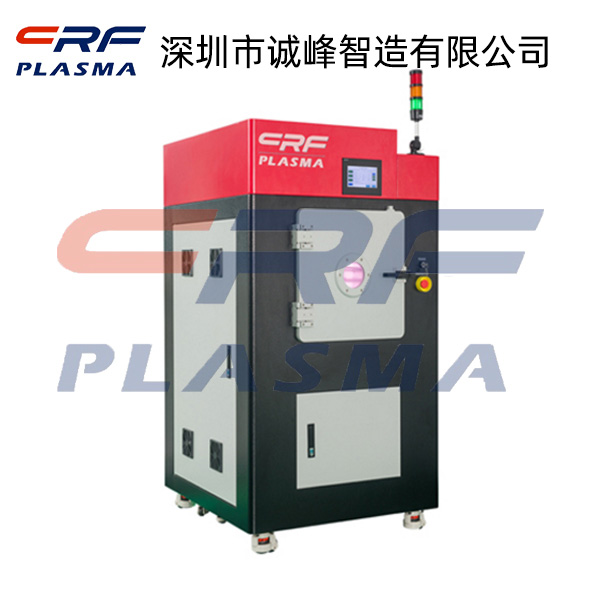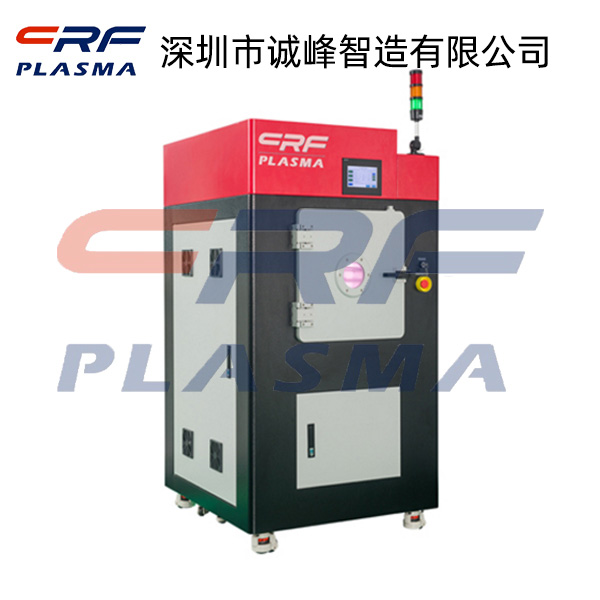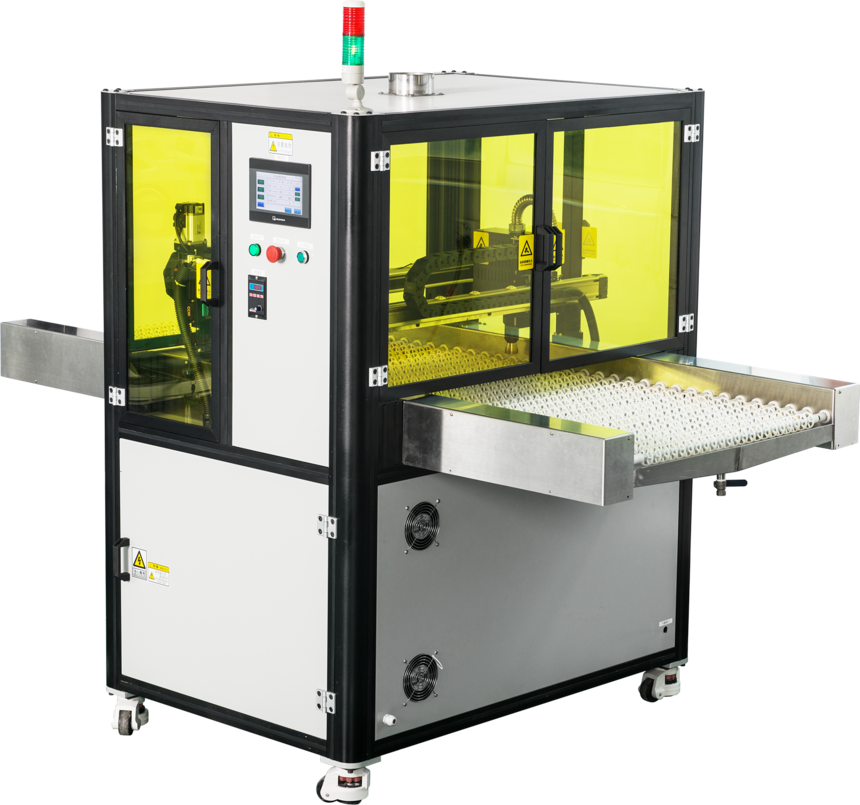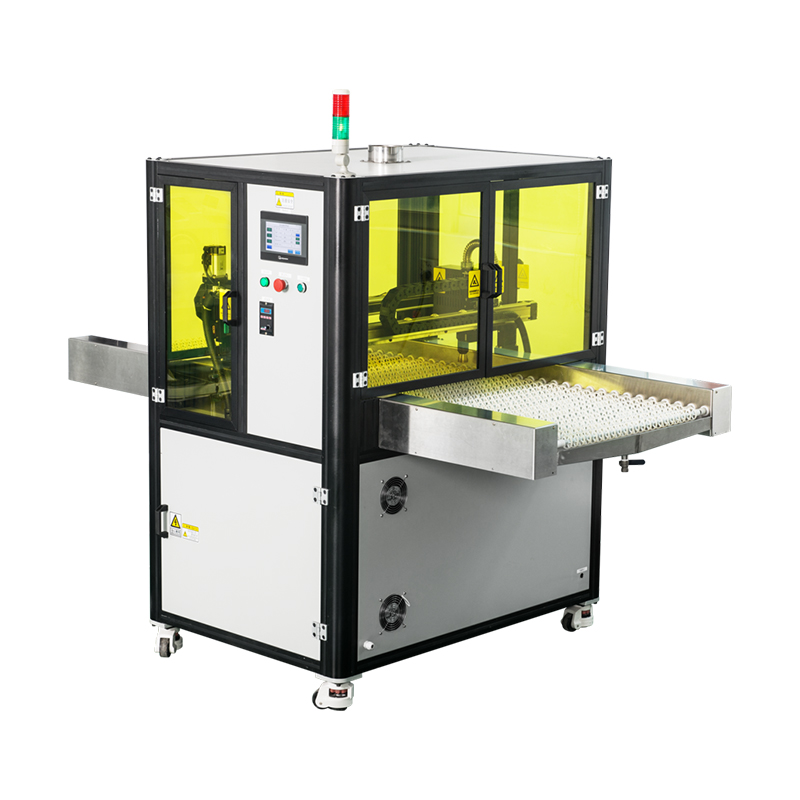
Welcome to Shenzhen Sing Fung Intelligent Manufacturing Co., Ltd.
E-mail:shaobo@sfi-crf.com
The role of plasma cleaning technology on the surface of the cathode panel
- Categories:Technical Support
- Author:plasma cleaning machine-surface treatment equipment-CRF plasma machine-Sing Fung Intelligent Manufacturing
- Origin:
- Time of issue:2021-06-19
- Views:
(Summary description)The role of plasma cleaning technology on the surface of the cathode panel: Vacuum optoelectronic devices represented by low-light image intensifiers have a wide range of applications in national defense, scientific research and other industries, and have received widespread attention in China. The low-light image intensifier is mainly composed of cathode input window, multi-alkali photocathode, microchannel plate, phosphor screen, anode output window and other parts. Plasma cleaning technology Its working principle: Under low illumination at night, the scene image that cannot be directly seen by the human eye is converted into the corresponding photoelectron image through the multi-alkali photocathode on the cathode input window. The photoelectron image is amplified and enhanced by the microchannel plate electron multiplier , And then accelerated by the anode high voltage, converted by the fluorescent screen into an optical image with sufficient brightness, and output through the anode output window for human eyes to watch. Multi-alkali photocathode is made by vacuum evaporation process. During production, four evaporation sources of Sb, K, Na and Cs are alternately evaporated to form a multi-alkali photocathode with Na2KSb (Cs) film. One of the main indicators of the low-light image intensifier is the sensitivity of the multi-alkali photocathode. Its level mainly depends on the growth quality of the Na2KSb(Cs) film, and the growth quality of the Na2KSb(Cs) film is in turn with the surface activity of the cathode panel. Cleanliness and so on are closely related. At the same time, if the surface of the cathode is not smooth or pure, it will also cause vacuum breakdown caused by field emission and damage the multi-alkali photocathode film. The main factors that cause vacuum discharge are: unevenness and microscopic bumps, free particles on the surface of the cathode panel, dielectric film, semiconductor film, additives on the cathode panel, and adsorbed gas. It is generally believed that the glass surface is divided into two layers: subsurface layer (Subsurface), that is, 0-100 nm below the surface, this layer has a large number of hydroxyl groups, and it has a strong affinity for water, so the glass surface adsorbs a large amount of water molecules (including a small amount of CO2). This part of the gas is not firmly bonded to the surface, which belongs to physical adsorption and weak chemical adsorption. Generally, when heated to about 150~200C in a vacuum, most of it can be desorbed from the glass within a few minutes. Nearsurface, also known as weathered surface layer, the more alkaline oxide glass (such as soda glass, lead glass) has poor chemical stability of alkaline oxide and is susceptible to water vapor corrosion, so it is easier to weather. The thickness of the weathered surface layer is generally a few microns. There is a large amount of gas, especially water, in the weathered surface layer. The weathered surface layer can be removed by soaking in a tartaric acid solution, or by plasma bombardment. tartaric acid solution soaking is to clean the organic cleaning solvent that is not easy to wash off, and also to clean the surface of the cathode panel. In this traditional process, in addition to using a large amount of tartaric acid solution, deionized water and alcohol, it also requires a longer processing time. Long-term use of this cleaning method is not only inefficient and wastes resources, but also has an impact on the environment and is not conducive to environmental protection. The working principle of plasma cleaning is to use a vacuum pump to evacuate the working chamber to a vacuum degree of 30~50Pa, and then ionize the gas under the action of the alternating electric field of the high-frequency generator to form a plasma state. Its remarkable feature is high uniformity Sexual glow discharge emits colored visible light from blue to deep purple according to different gases, and the material processing temperature is close to room temperature. The active plasma performs the dual effects of physical bombardment and chemical reaction on the cleaned object, so that the surface material of the cleaned object becomes particles and gaseous substances, which are exhausted by vacuum to achieve the purpose of cleaning. Plasma cleaning is a "dry" surface cleaning technology, applicable to various types of materials, such as metals, semiconductors, oxides and most polymer materials. At the same time, the geometry of the object to be cleaned is not limited, and the cleaning cost is much lower than that of wet cleaning. Only a few bottles of gas can replace thousands of kilograms of cleaning fluid. Plasma cleaning technology is used to treat the surface of the cathode panel, which can not only clean the surface of the cathode panel, but also increase the surface activity of the cathode panel, meet the production requirements of the multi-alkali photocathode, and make the growt
The role of plasma cleaning technology on the surface of the cathode panel
(Summary description)The role of plasma cleaning technology on the surface of the cathode panel:
Vacuum optoelectronic devices represented by low-light image intensifiers have a wide range of applications in national defense, scientific research and other industries, and have received widespread attention in China. The low-light image intensifier is mainly composed of cathode input window, multi-alkali photocathode, microchannel plate, phosphor screen, anode output window and other parts.
Plasma cleaning technology
Its working principle: Under low illumination at night, the scene image that cannot be directly seen by the human eye is converted into the corresponding photoelectron image through the multi-alkali photocathode on the cathode input window. The photoelectron image is amplified and enhanced by the microchannel plate electron multiplier , And then accelerated by the anode high voltage, converted by the fluorescent screen into an optical image with sufficient brightness, and output through the anode output window for human eyes to watch.
Multi-alkali photocathode is made by vacuum evaporation process. During production, four evaporation sources of Sb, K, Na and Cs are alternately evaporated to form a multi-alkali photocathode with Na2KSb (Cs) film. One of the main indicators of the low-light image intensifier is the sensitivity of the multi-alkali photocathode. Its level mainly depends on the growth quality of the Na2KSb(Cs) film, and the growth quality of the Na2KSb(Cs) film is in turn with the surface activity of the cathode panel. Cleanliness and so on are closely related.
At the same time, if the surface of the cathode is not smooth or pure, it will also cause vacuum breakdown caused by field emission and damage the multi-alkali photocathode film. The main factors that cause vacuum discharge are: unevenness and microscopic bumps, free particles on the surface of the cathode panel, dielectric film, semiconductor film, additives on the cathode panel, and adsorbed gas.
It is generally believed that the glass surface is divided into two layers:
subsurface layer (Subsurface), that is, 0-100 nm below the surface, this layer has a large number of hydroxyl groups, and it has a strong affinity for water, so the glass surface adsorbs a large amount of water molecules (including a small amount of CO2). This part of the gas is not firmly bonded to the surface, which belongs to physical adsorption and weak chemical adsorption. Generally, when heated to about 150~200C in a vacuum, most of it can be desorbed from the glass within a few minutes.
Nearsurface, also known as weathered surface layer, the more alkaline oxide glass (such as soda glass, lead glass) has poor chemical stability of alkaline oxide and is susceptible to water vapor corrosion, so it is easier to weather.
The thickness of the weathered surface layer is generally a few microns. There is a large amount of gas, especially water, in the weathered surface layer. The weathered surface layer can be removed by soaking in a tartaric acid solution, or by plasma bombardment.
tartaric acid solution soaking is to clean the organic cleaning solvent that is not easy to wash off, and also to clean the surface of the cathode panel. In this traditional process, in addition to using a large amount of tartaric acid solution, deionized water and alcohol, it also requires a longer processing time. Long-term use of this cleaning method is not only inefficient and wastes resources, but also has an impact on the environment and is not conducive to environmental protection.
The working principle of plasma cleaning is to use a vacuum pump to evacuate the working chamber to a vacuum degree of 30~50Pa, and then ionize the gas under the action of the alternating electric field of the high-frequency generator to form a plasma state. Its remarkable feature is high uniformity Sexual glow discharge emits colored visible light from blue to deep purple according to different gases, and the material processing temperature is close to room temperature.
The active plasma performs the dual effects of physical bombardment and chemical reaction on the cleaned object, so that the surface material of the cleaned object becomes particles and gaseous substances, which are exhausted by vacuum to achieve the purpose of cleaning.
Plasma cleaning is a "dry" surface cleaning technology, applicable to various types of materials, such as metals, semiconductors, oxides and most polymer materials. At the same time, the geometry of the object to be cleaned is not limited, and the cleaning cost is much lower than that of wet cleaning. Only a few bottles of gas can replace thousands of kilograms of cleaning fluid.
Plasma cleaning technology is used to treat the surface of the cathode panel, which can not only clean the surface of the cathode panel, but also increase the surface activity of the cathode panel, meet the production requirements of the multi-alkali photocathode, and make the growt
- Categories:Technical Support
- Author:plasma cleaning machine-surface treatment equipment-CRF plasma machine-Sing Fung Intelligent Manufacturing
- Origin:
- Time of issue:2021-06-19 17:16
- Views:
The role of plasma cleaning technology on the surface of the cathode panel:
Vacuum optoelectronic devices represented by low-light image intensifiers have a wide range of applications in national defense, scientific research and other industries, and have received widespread attention in China. The low-light image intensifier is mainly composed of cathode input window, multi-alkali photocathode, microchannel plate, phosphor screen, anode output window and other parts.

Plasma cleaning technology
Its working principle: Under low illumination at night, the scene image that cannot be directly seen by the human eye is converted into the corresponding photoelectron image through the multi-alkali photocathode on the cathode input window. The photoelectron image is amplified and enhanced by the microchannel plate electron multiplier , And then accelerated by the anode high voltage, converted by the fluorescent screen into an optical image with sufficient brightness, and output through the anode output window for human eyes to watch.
Multi-alkali photocathode is made by vacuum evaporation process. During production, four evaporation sources of Sb, K, Na and Cs are alternately evaporated to form a multi-alkali photocathode with Na2KSb (Cs) film. One of the main indicators of the low-light image intensifier is the sensitivity of the multi-alkali photocathode. Its level mainly depends on the growth quality of the Na2KSb(Cs) film, and the growth quality of the Na2KSb(Cs) film is in turn with the surface activity of the cathode panel. Cleanliness and so on are closely related.
At the same time, if the surface of the cathode is not smooth or pure, it will also cause vacuum breakdown caused by field emission and damage the multi-alkali photocathode film. The main factors that cause vacuum discharge are: unevenness and microscopic bumps, free particles on the surface of the cathode panel, dielectric film, semiconductor film, additives on the cathode panel, and adsorbed gas.
It is generally believed that the glass surface is divided into two layers:
subsurface layer (Subsurface), that is, 0-100 nm below the surface, this layer has a large number of hydroxyl groups, and it has a strong affinity for water, so the glass surface adsorbs a large amount of water molecules (including a small amount of CO2). This part of the gas is not firmly bonded to the surface, which belongs to physical adsorption and weak chemical adsorption. Generally, when heated to about 150~200C in a vacuum, most of it can be desorbed from the glass within a few minutes.
Nearsurface, also known as weathered surface layer, the more alkaline oxide glass (such as soda glass, lead glass) has poor chemical stability of alkaline oxide and is susceptible to water vapor corrosion, so it is easier to weather.
The thickness of the weathered surface layer is generally a few microns. There is a large amount of gas, especially water, in the weathered surface layer. The weathered surface layer can be removed by soaking in a tartaric acid solution, or by plasma bombardment.
tartaric acid solution soaking is to clean the organic cleaning solvent that is not easy to wash off, and also to clean the surface of the cathode panel. In this traditional process, in addition to using a large amount of tartaric acid solution, deionized water and alcohol, it also requires a longer processing time. Long-term use of this cleaning method is not only inefficient and wastes resources, but also has an impact on the environment and is not conducive to environmental protection.
The working principle of plasma cleaning is to use a vacuum pump to evacuate the working chamber to a vacuum degree of 30~50Pa, and then ionize the gas under the action of the alternating electric field of the high-frequency generator to form a plasma state. Its remarkable feature is high uniformity Sexual glow discharge emits colored visible light from blue to deep purple according to different gases, and the material processing temperature is close to room temperature.
The active plasma performs the dual effects of physical bombardment and chemical reaction on the cleaned object, so that the surface material of the cleaned object becomes particles and gaseous substances, which are exhausted by vacuum to achieve the purpose of cleaning.
Plasma cleaning is a "dry" surface cleaning technology, applicable to various types of materials, such as metals, semiconductors, oxides and most polymer materials. At the same time, the geometry of the object to be cleaned is not limited, and the cleaning cost is much lower than that of wet cleaning. Only a few bottles of gas can replace thousands of kilograms of cleaning fluid.
Plasma cleaning technology is used to treat the surface of the cathode panel, which can not only clean the surface of the cathode panel, but also increase the surface activity of the cathode panel, meet the production requirements of the multi-alkali photocathode, and make the growth quality of the multi-alkali photocathode film reach the traditional tartaric acid The effect of solution immersion treatment.
At the same time, plasma cleaning technology is more efficient than traditional tartaric acid solution soaking, and reduces the use of resources such as tartaric acid solution, deionized water and alcohol, achieving the purpose of reducing costs and protecting the environment.
Plasma cleaning technology only uses electricity and argon, saving a lot of deionized water, detergent, alcohol and tartaric acid. According to statistics, not only the production cost has been reduced by about 50%, which has good economic benefits, but also is conducive to environmental protection and has good social benefits.
Scan the QR code to read on your phone

TEL:0755-3367 3020 / 0755-3367 3019

E-mail:sales-sfi@sfi-crf.com

ADD:Mabao Industrial Zone, Huangpu, Baoan District, Shenzhen















